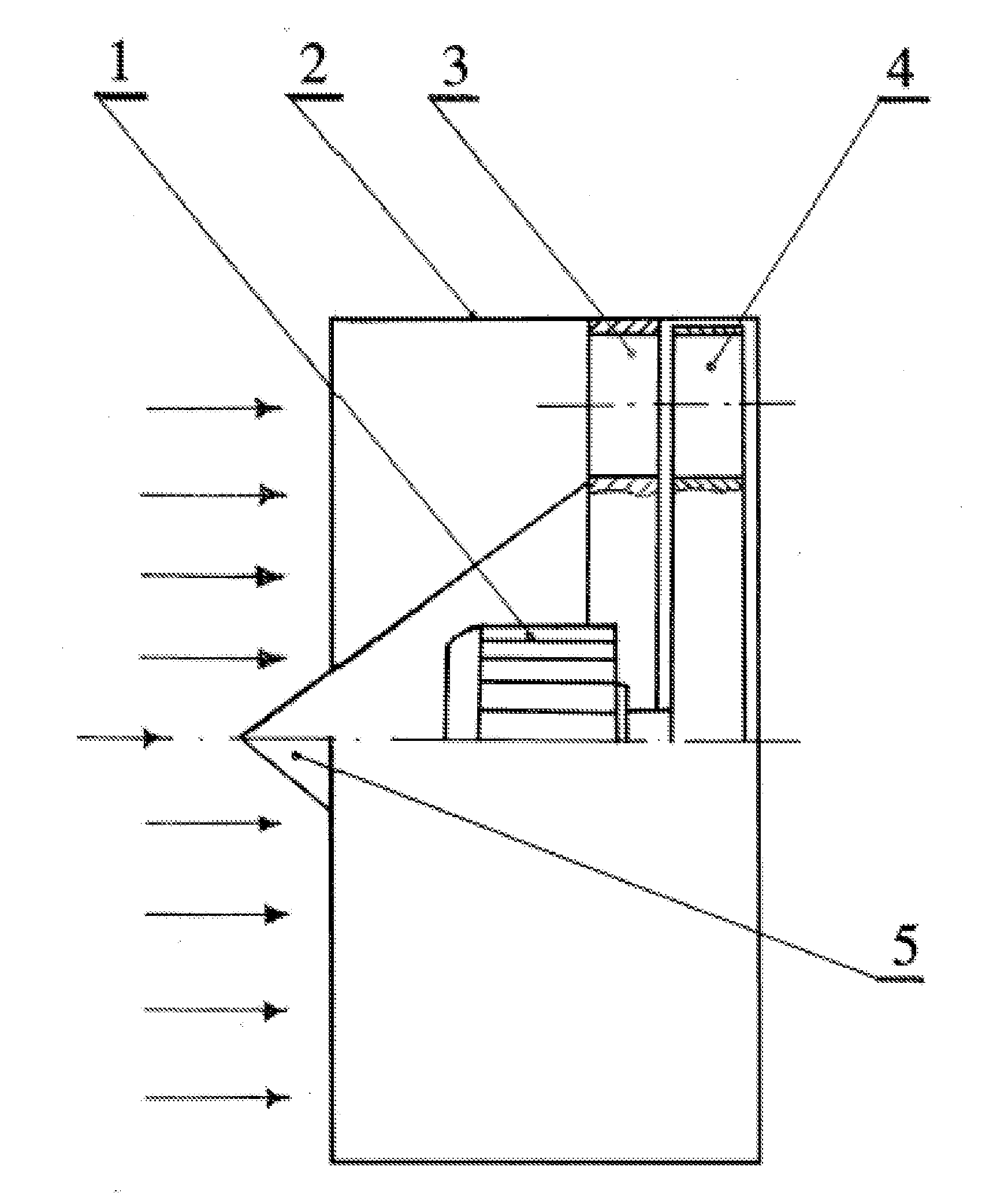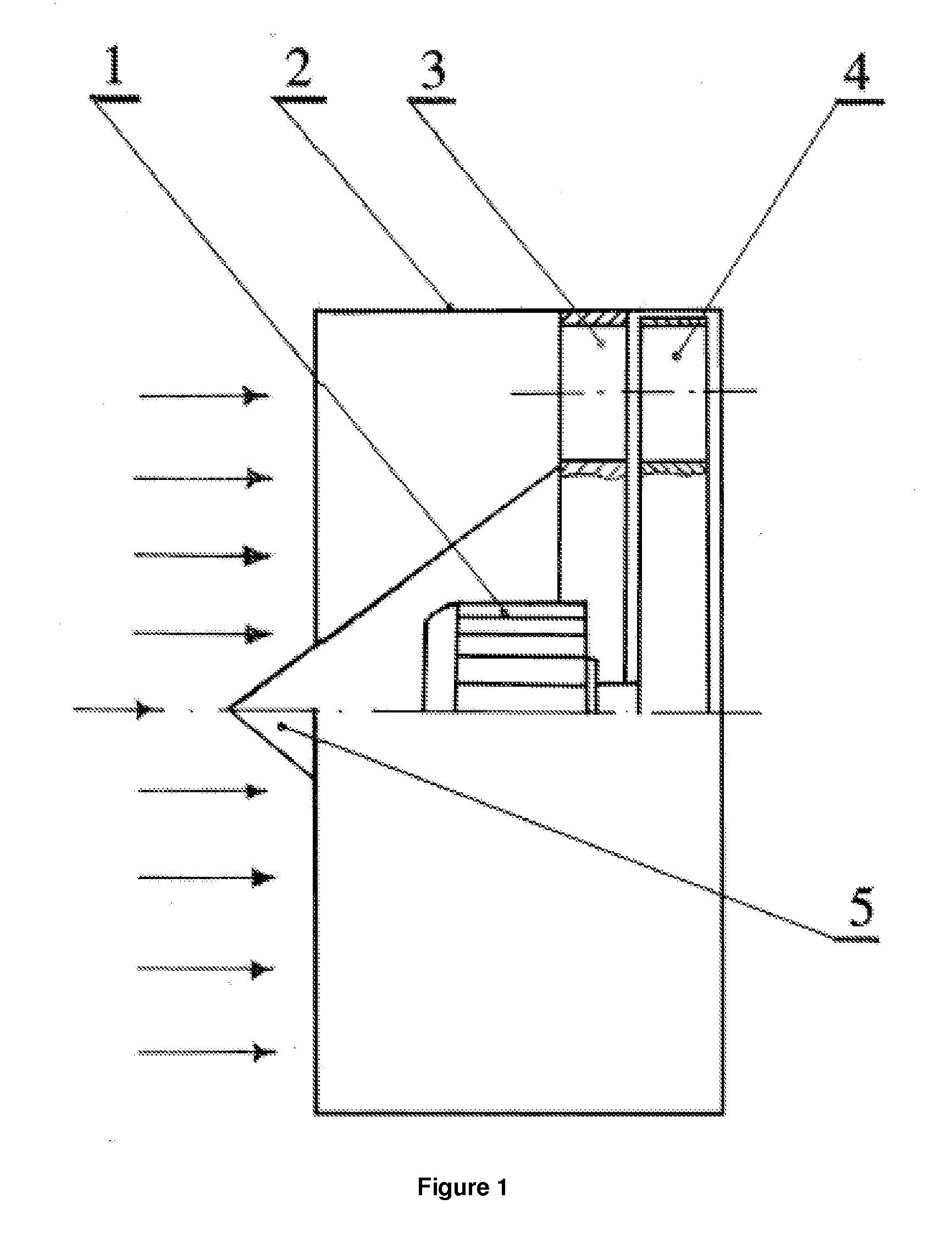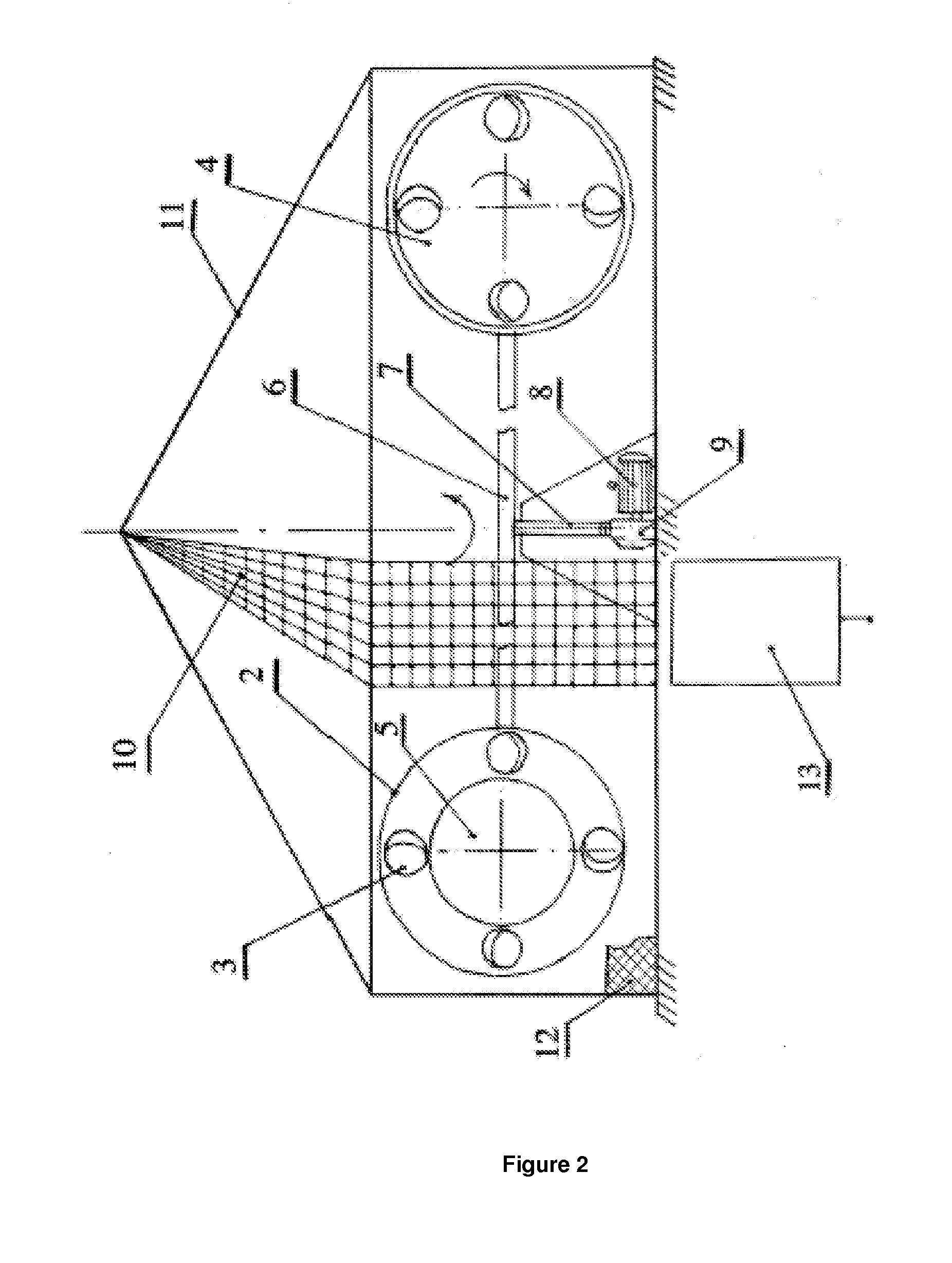Method and solar-powered wind plant for producing electric power
- Summary
- Abstract
- Description
- Claims
- Application Information
AI Technical Summary
Benefits of technology
Problems solved by technology
Method used
Image
Examples
example 2
[0065]The installation for producing electric power has been manufactured. The installation includes the generator 1 with a capacity of 1 kW, annular fairing 2 of 350 mm in diameter, cone fairing 5 at an angle of 70°, guiding partition with holes 3 at an angle of 45°. The generators are mounted on the moveable frame 6 on which two power-generating modules (turbines) are installed.
[0066]The rotor and guiding partition have 16 holes each. The power-generating modules have the same weight. The motor 8, frame 6 drives have a capacity of 0.8 kW at 3000 rpm. The gear (9) ratio is 1:50. The rotation radius is two meters. The installation is started up in the same manner as specified in example 1. The solar batteries rotate the frame with a speed of 60 rpm and the ongoing stream speed is approx. 12 m / s. At such a speed of the ongoing stream the vortex turbine and generators operate under the nominal mode. If necessary, one of the generators is switched over to the motor 8, and the second ge...
PUM
 Login to View More
Login to View More Abstract
Description
Claims
Application Information
 Login to View More
Login to View More - R&D
- Intellectual Property
- Life Sciences
- Materials
- Tech Scout
- Unparalleled Data Quality
- Higher Quality Content
- 60% Fewer Hallucinations
Browse by: Latest US Patents, China's latest patents, Technical Efficacy Thesaurus, Application Domain, Technology Topic, Popular Technical Reports.
© 2025 PatSnap. All rights reserved.Legal|Privacy policy|Modern Slavery Act Transparency Statement|Sitemap|About US| Contact US: help@patsnap.com



